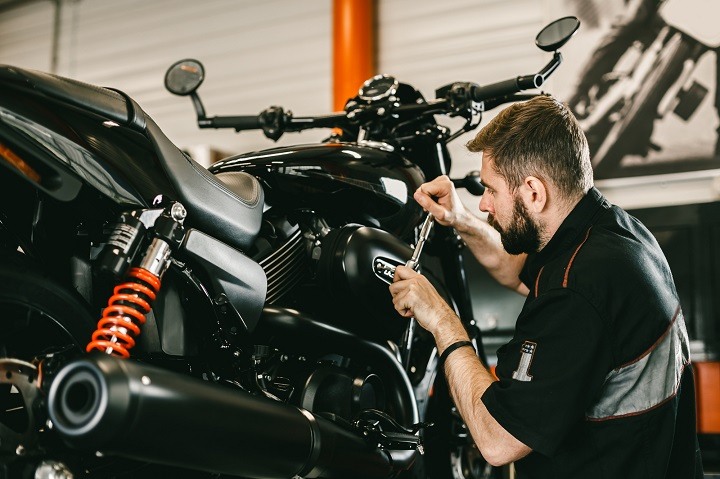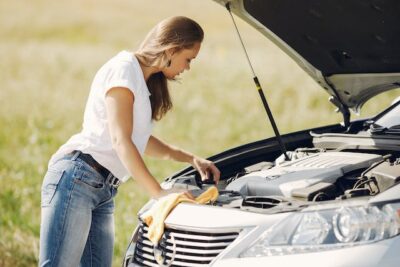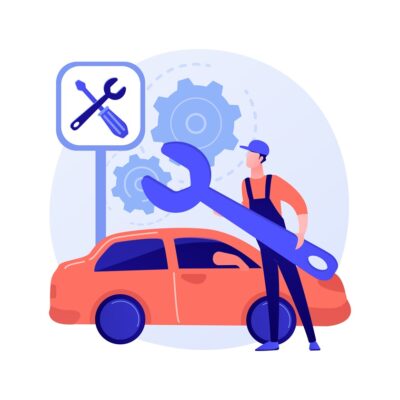After waiting in line for an average of 44 minutes at the DMV, you now have your motorcycle registration.
Congratulations! Now, your ride is one of the 8.4 million legally-registered motorcycles in the country. You can finally do the biker wave on your awesome-looking and badass two-wheeler.
But your sled won’t look that way for long if you forget all about basic motorcycle maintenance. Failure to keep your bike in top condition can even lead to fatal crashes. True, there are fewer motorcycle accidents, but they still claimed 5,000 lives in 2017.
So, how exactly do you keep your wheels in great shape? Keep reading as we’ve listed the most important bike upkeep basics below!
Build a Motorcycle Toolkit ASAP
Before you can carry out the steps on this motorcycle maintenance guide, you first need tools. Wrenching on your bike yourself is one of the best ways to cut your travel costs and riding expenses too. Plus, in case you get into some bike trouble on the road, your toolkit can save you.
Start building your kit with screwdrivers of various sizes and heads. Philips (the cross-headed one), flat-heads, and hex heads are necessary for most bike jobs. Be sure to also get a wrench set, a ratchet and socket set, pliers, and a tire pressure gauge.
You should also invest in communication gear, especially if you often go on long trips. These are wireless devices you can use to talk to your passenger without having to scream on top of your lungs. Some, like the Cardo Scala Rider intercom, even let you talk to other motorcycle riders.
Don’t Tire Out Your Tires
Always check your tires’ condition before you go on your regular commute. This is even more important if you travel and do more adventures on it. The last thing you want is to get a flat or a blown-out tire in the middle of the road.
Exact motorcycle tire tread depth regulations vary from state to state. For instance, in Maryland, tires that have a tread depth of less than 2/32 inch is already “unsafe”. Other states may allow depth to go down to 1/32, but that doesn’t mean you should keep riding on it.
First, because excessive tread wearing reduces the tire’s traction, especially in wet conditions. They’re almost bald, which makes them more susceptible to punctures. If your tire tread is down to 2/32 of an inch, consider replacing it ASAP.
Regular visual inspections should also be part of your motorcycle maintenance must-dos.
Be on the lookout for uneven wearing, such as if one area is thinner or balding faster than the rest. Check for embedded objects too, like nails or shards of glass. Other damages, like dry rot, bulging, and cracking, also often signal a tire change.
Inflation, Inflation, Inflation
Tire inflation guidelines also depend on the motorcycle or tire manufacturer. Your manual is your best source of info on proper inflation requirements. This is also where your tire pressure gauge comes in handy.
Proper air pressure is vital to both the performance and life of your tires. Too little pressure, especially with cargo or with a passenger, and it’ll go flat or blow out. Whereas overinflation can lessen the tires’ contact area, reducing their traction.
Either way, incorrect air pressure can lead to difficult steering and sluggishness. Your bike can even suffer internal damage because of over-flexing.
Always Keep Your Engine Oil Topped Up
Your sled’s engine oil lubricates all your engine’s gears and components. Let this valuable fluid run out, and you’re looking at prematurely-worn engine parts. This can even lead to internal damage to your bike’s engine.
Don’t forget the motorcycle maintenance schedule for oil changes listed in your manual. Some bike manufacturers recommend an oil change after 5,000 km, while others after 10,000 km. This depends on the specific model and age of your bike, but make sure you don’t delay oil changes!
Engines running on old or dirty engine oil consume more fuel. Also, the contaminants in the dirty oil can spread through your bike’s sensitive parts. That can cut the engine’s life short.
Lubricate and Clean Your Bike Chain
Aside from regular lubrication, you should also keep your bike chain clean and free of debris. All these prevent excessive grinding and heat from wearing out the chain too early. Also, follow the manufacturer’s recommendation on chain tension and free play.
If there’s too much chain wear, the individual links can cause the chain to loosen. This can then cause the chain to fall off or detach from the sprockets. That’s one of the most dangerous bike situations you wouldn’t want to be in.
Your bike chain is quite sensitive though, so only use a soft brush, cloth, and paraffin to clean it. Don’t spray water on the chains, as that can rust and corrode the links.
Use a separate clean (still dry!) cloth to wipe the chain after getting rid of the dirt and debris. If you still have some left-over engine oil, use that for your chain’s lubrication.
Clean the Air Filter and Know When to Change It
Over time — sooner if you often ride in dusty conditions — dirt will build up on your bike’s air filter. These contaminants can get into your engine and cause internal damage there.
If you’ve got a washable filter, follow the recommendations on the right way to clean it. A too-high water pressure level can damage the mesh, so be careful when cleaning it. If you have a replaceable filter, check your manual on when you should get it changed.
Keep Ridin’ with These Basic Motorcycle Maintenance Tasks
Regular basic motorcycle maintenance makes your bike a smooth operator on the road. It also keeps your engine from burning out earlier, while putting more miles on your gauge. And the most important: It keeps you on the bike and not shredding your skin on the pavement.
So, make it a habit to do these visual and internal checks before and after riding. That way, you can make the most out of your motorcycle and the freedom that comes with riding it.
Want to bring your ride to your next vacation? Then plan the perfect low-budget holiday with these tips!










